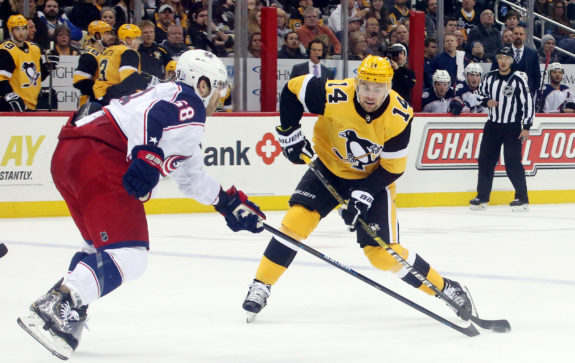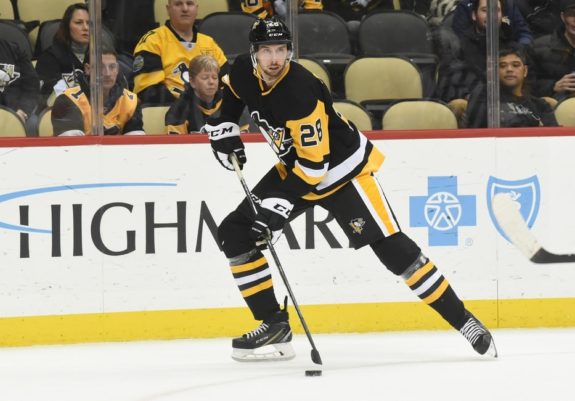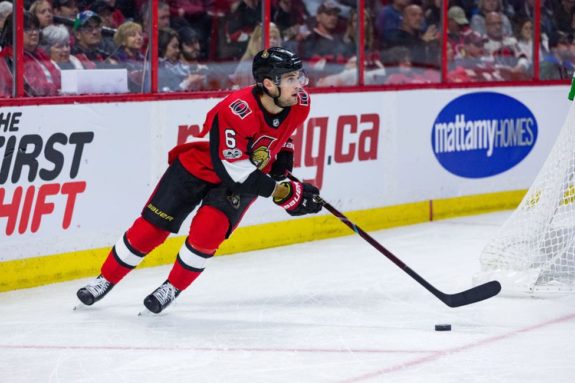As has been the case over the last few seasons, the Pittsburgh Penguins didn’t wait until the 11th hour to start making moves. General manager Jim Rutherford was active on the market all season long, making several small moves before a blockbuster deal in early February.
The Penguins are still fighting for a playoff berth so it remains to be seen how these trades will pan out over the entire season. For now though, it seems like Rutherford has done a great job of bolstering the NHL roster ahead of the postseason push.
Note: Only trades that have affected the current NHL roster will be mentioned below.
Carl Hagelin to the Kings for Tanner Pearson (C-)
The Penguins’ first trade during the 2018-19 campaign was a classic “change of scenery” move. Carl Hagelin was an important piece of their two Stanley Cup-winning teams but he scored just three points in 16 games to start the season before being sent to the Los Angeles Kings. Meanwhile, Tanner Pearson was held without a goal through 17 games after scoring 39 over the previous two seasons.

Since the swap, Pearson has scored 14 points compared to Hagelin’s five, though Hagelin missed 20 games due to a knee injury. While it seems like a strong trade for Pittsburgh on the surface, recent developments have changed that.
The Kings flipped Hagelin to the Penguins’ division rival Washington Capitals. There’s a possibility that the teams could meet in the postseason and the trade could come back to bite the Penguins. In Pittsburgh, Pearson has averaged less than eight minutes of ice time over the last three games after being a healthy scratch in the previous two.
Neither team really got a great deal, but the Kings sending Hagelin back to a contender in the Metropolitan Division hurts the Penguins. While Pearson has been better for Pittsburgh than Hagelin was this season, the team will have to figure out what to do with his $3.75 million cap hit over the next two seasons.
Daniel Sprong to the Ducks for Marcus Pettersson (B+)
In the first of two trades with the Anaheim Ducks this season, Pittsburgh sent Daniel Sprong out west in exchange for Marcus Pettersson. Of all the one-for-one player swaps that the Penguins made this season, this one was easily the best.
Sprong’s value had plummeted over the last couple seasons, scoring just nine points in 42 career games for Pittsburgh. A second-round pick in 2015, the 21-year-old was considered a strong prospect with high-end offensive upside but he just never panned out. Despite scoring nine goals in his first 23 games with the Ducks, Sprong has been a healthy scratch of late.

While Pittsburgh may have dished Sprong at his lowest value, Pettersson has been very important to the team since his acquisition. The rookie blueliner has 13 points in 37 games with the Penguins. He’s mostly a depth defenseman, but the 22-year-old has tapped into some deeper potential on his new team.
Derek Grant to the Ducks for Joseph Blandisi (B)
Keeping the theme of one-for-one deals, Pittsburgh sent Derek Grant to his former team in Anaheim. The depth forward tallied two goals and five points in 25 games for the Penguins prior to the trade. In exchange, Pittsburgh acquired minor-league forward Joseph Blandisi. He’s scored 10 points in 11 games with AHL Wilkes-Barre/Scranton and provides the organization with some insurance as a depth forward.
Blandisi also scored 17 points in 41 games during his rookie 2015-16 season with the New Jersey Devils. While this trade won’t have a huge impact, the Penguins were able to free up a roster spot that was used to recall Teddy Blueger while getting an AHL forward with a bit of potential.
Jamie Oleksiak to the Stars for a fourth-round pick (C-)
Pittsburgh sent Jamie Oleksiak back to the Dallas Stars for a fourth-round pick, the exact same pick that Pittsburgh traded to Dallas to acquire Oleksiak last season. So yes, it’s basically as if the trade never happened. Still, Pittsburgh was able to dump his salary and have some more salary room to work with.

However, like Pettersson, Oleksiak had become a much better player since the Penguins acquired him. In 83 career games with Pittsburgh, the big-bodied blueliner scored 25 points compared to just 22 points in 140 games with Dallas prior to the first trade. On top of that, recent injuries to Kris Letang, Brian Dumoulin, and Olli Maatta could spell trouble for the Penguins. Having extra defensive depth like Oleksiak would make life a lot easier for the team at this point.
Derick Brassard, Riley Sheahan and picks to the Panthers for Nick Bjugstad and Jared McCann (B+)
In the biggest and most noteworthy trade the Penguins made this season, the team sent Derick Brassard, Riley Sheahan, and three 2019 draft picks (a second and two fourths) to the Florida Panthers for Nick Bjugstad and Jared McCann. Pittsburgh acquired Brassard from the Ottawa Senators prior to the 2018 Trade Deadline and he never really found his groove with the team. He averaged just 15 minutes on ice per game during his tenure with the Penguins, scoring 23 points in 54 regular season games.

With Brassard’s stock falling, the Penguins got decent value by acquiring Bjugstad and McCann, even if it cost them a few picks. The 6-foot-6 Bjugstad, like Brassard, can play both center and on the wing and adds a bit more physicality. While he may not have as much offensive upside, he’s a strong middle-six forward who also contributes on the team’s second power-play unit.
Even McCann, seen as a small piece of this trade, scored three goals in a four-game span in early February. The 22-year-old adds some secondary scoring as a bottom-six winger. He’s under contract next season and Bjugstad has another two years on his deal while both Brassard and Sheahan are pending free agents.
Tanner Pearson to the Canucks for Erik Gudbranson (D-)
In a last-ditch effort to beef up the blue line, the Penguins acquired a couple defensemen right at the deadline. First, they picked up Erik Gudbranson from the Vancouver Canucks in exchange for the aforementioned Pearson. This move was made out of desperation due to injuries in Pittsburgh and it’s not a very good one.
Hearing Erik Gudbranson on the move, from VAN to PIT.
— Bob McKenzie (@TSNBobMcKenzie) February 25, 2019
Gudbranson, a 6-foot-5 veteran, has just 62 points in 448 career NHL appearances. Barring a major change in his on-ice philosophy, he won’t provide much offense for the Penguins. The team simply needed more bodies with injuries to half of their regular defensemen. However, Gudbranson carries a $4 million cap hit for another two seasons.
Again, Pearson’s value was shrinking quickly and it makes sense that the Penguins flipped him to free up space for their younger wingers, such as Blueger or Dominik Simon. However, acquiring a blueliner that’s posted a sub-50 percent Corsi rating in seven of his eight NHL seasons doesn’t look good on paper.
Jean-Sebastian Dea to the Panthers for Chris Wideman (C)
The second defenseman acquired by the Penguins at the last minute was Chris Wideman, who will join his fourth NHL team this season. The 29-year-old is a pending free agent and has more offensive upside than Gudbranson, making this a much smarter trade for the Penguins. Wideman has 13 points in 16 games with AHL Springfield this season and tallied 17 points with Ottawa during the 2016-17 campaign. He’s not flashy, but he’s a cheap rental that should help fill in for injuries.

Jean-Sebastian Dea has been a solid AHL center for the last few seasons but is buried in the organizational depth chart. The 25-year-old has just seven points in 29 career games with Pittsburgh and didn’t expect to carve out a role with the NHL club anytime soon.
Overall, the Penguins made several successful trades over the course of the season. Unfortunately, with injuries and some underperforming stars, the team is still fighting for their lives to keep a playoff spot. While nearly every trade improved the team, these trades look much worse if Pittsburgh fails to reach the postseason and is still stuck with unhealthy cap hits heading into the offseason.